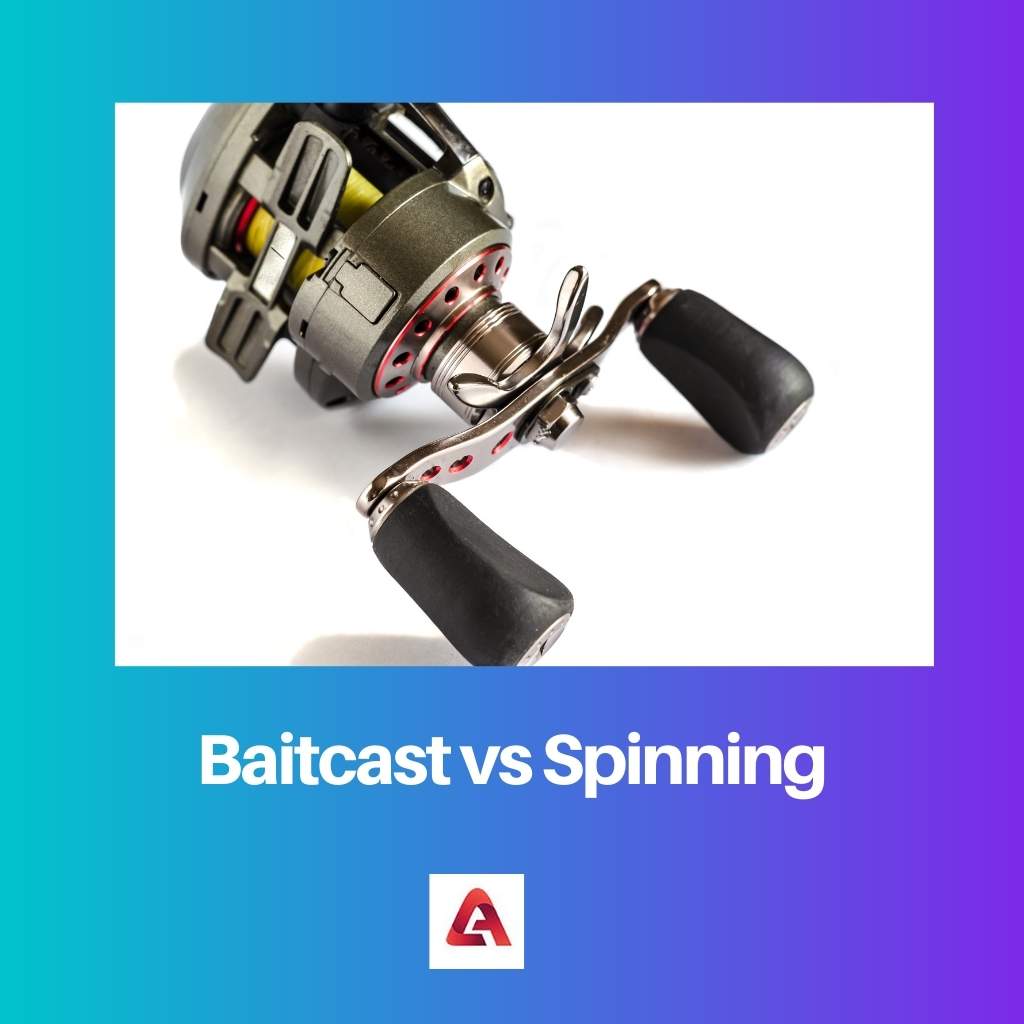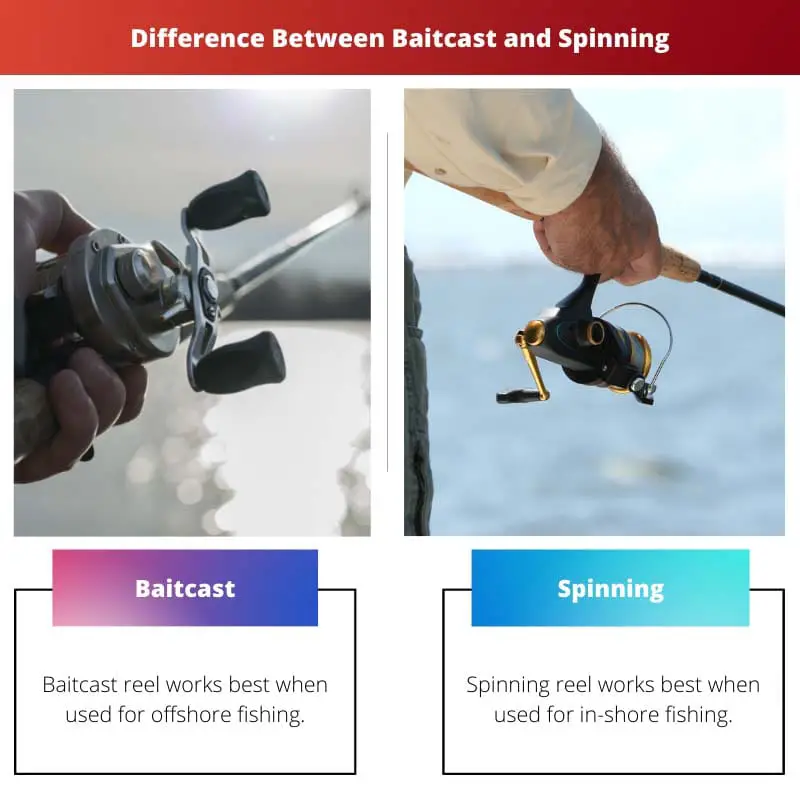Fishing is not as simple as it seems. A fisherman must weigh up numerous factors, including the location, weather, tides, water temperature, turbidity, barometric pressure, and even the type of reel.
When it comes to reels, elements such as line capacity, casting distance, lure weight, speed of throw, and even wind intensity affect the process of fishing.
Key Takeaways
- Baitcast and spinning are fishing reels used to cast and retrieve fishing lines.
- Baitcast reels are mounted on the top of the fishing rod and require a more advanced casting technique while spinning reels are mounted below the fishing rod and are easier to use.
- While baitcasting reels are suitable for experienced anglers and heavier lures, spinning reels are more versatile and can be used by beginners and for lighter lures.
Baitcast vs Spinning
Baitcast is a type of fishing reel designed for heavier lures and lines and is commonly used for freshwater and saltwater fishing. It allows for more accuracy and control over the cast. Spinning is a type of fishing reel that is easier to use and commonly used for light to medium-weight lures and lines.

Baitcast reels are placed on top of the rod, which makes the spool parallel to the rod. Due to this, the spool moves along with the casting line while fishing.
Spinning reels are one of the easiest-to-use reels on the market. Due to their structural design, these rods are perfect for lightweight casting.
Comparison Table
| Parameters of Comparison | Baitcast | Spinning |
|---|---|---|
| Use | Baitcast reel works best when used for offshore fishing. | Spinning reel works best when used for in-shore fishing. |
| Strength | Baitcast reels can be used for heavy-weight fishing. | Spinning reels are best for casting lightweight lures. |
| Position | Baitcast reels are placed on top of the rod. | Spinning reels are placed below the rod. |
| Level of Difficulty | Baitcast reels are comparatively difficult to use because of their structure. | Spinning reels are easy to use and are thus the perfect choice for beginners and children. |
| Readjustment | The user must set up the spool spin and lure weight according to their liking before use. | The user does not need to re-adjust the spool spin and lure weight after every use. |
| Cost | Baitcast reels are more expensive. | Spinning reels are very budget-friendly. |
| Backlashes | Baitcast reels have a high risk of backlashing while in use. | Spinning reels do not backlash at all and thus making it a convenient option. |
What is Baitcast?
Baitcast is a kind of reel that is best used for offshore fishing. This is one of the most popular products in the market. These reels have a rigid structural design.
Line types such as fluorocarbon, monofilament, and braid are best suited for such a type of reel. However, bait cast reels have a heavy risk of backlashing.
Baitcast reels can be used with many different lures, baits, and lines. For this, the user required a certain amount of experience.
A fisherman must press the button of the reel to release the casting line. At that time, the bait is dropped automatically. Most fishermen use their thumbs to break and control the casting line.

What is Spinning?
Spinning reels are meant for inshore fishing. These types of reels are easy to use, which makes them perfect for beginners and children.
The reels are built-in with a drag system that helps adjust the amount of tension the fishing line undergoes. This is done with the help of a spool on the top of the knob that allows the user to calibrate the frictionless plates.
Another advantage of using a spinning reel is that just by unscrewing a knob, it can change the orientation from right to left-handed.
These reels came to popularity in the 1870s in North America. Then, they were also called fixed-spool reels or eggbeaters.

Main Differences Between Baitcast and Spinning
- The spool spin and lure weight need to be readjusted in baitcast reels, while spinning reels require no such readjustment.
- Baitcast reels have a high risk of backlashes, while there is no such risk with spinning reels.

- https://asmedigitalcollection.asme.org/IDETC-CIE/proceedings-abstract/IDETC-CIE2015/V05BT08A013/257800
- https://books.google.com/books?hl=en&lr=&id=4Bwc3bjwj7UC&oi=fnd&pg=PA7&dq=baitcaster+and+spinning&ots=5jSl3tXYO0&sig=6LiuFBNE4J6ksbeldv4yxbJJQTE

The comparison table provides a clear overview of the differences between baitcast and spinning reels.
Absolutely, this formatting makes it easier to understand.
This article could have been more concise and to the point. Some readers might find it too detailed.
I respectfully disagree. The level of detail is necessary to grasp the nuances of these fishing reels.
This article makes a very helpful and in-depth comparison between baitcast and spinning reels. It is a comprehensive guide for experienced and novices alike.
Yes, it provides a holistic understanding of the differences between both types of reels.
I agree, it is very informative and well-documented.
The in-depth analysis showcases the level of expertise in this article.
Agreed, it is evident that the information is well-researched.
I found this article to be overly detailed for my taste.
Good read – I appreciate the depth of information provided.
This article is a valuable resource for those seeking to enhance their fishing knowledge.